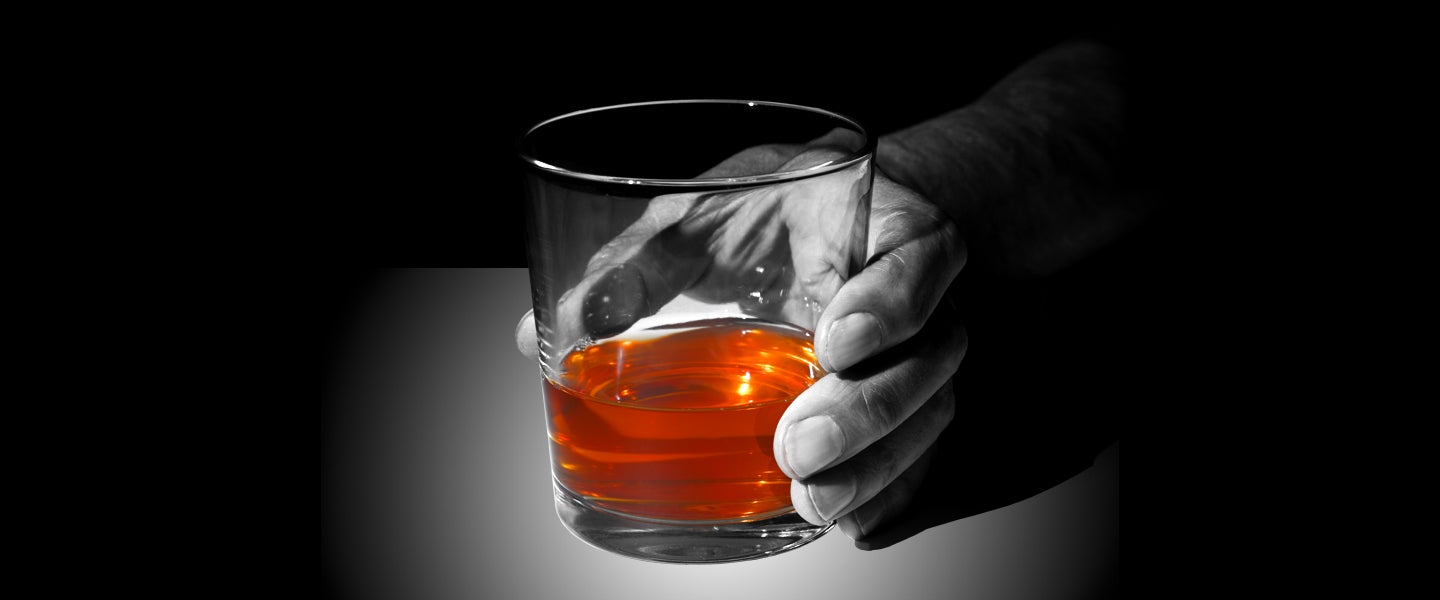Eighteen years ago, Kenneth Anderson was drinking a pint of whiskey four times a week. Eventually, he got sick of showing up to work the next day late and hungover, so he tried to quit. Turning to Alcoholics Anonymous, he was told that he was powerless to alcohol. Taking that message to heart, rather than quit, he nearly drank himself to death.
Anderson ended up going to a detox program where he was able to safely withdraw (cold turkey alcohol withdrawals can, in fact, kill a person) and decided that actually, he wasn’t powerless: He needed to make changes, sure, but he could figure out a healthier way of drinking.
Americans have subscribed to an all-or-nothing approach to alcoholism for decades. If you’re an alcoholic, the only mainstream approach to recovery is to give up drinking entirely, or else be completely out-of-control. But for many people, complete abstinence simply doesn’t work, or maybe isn’t even necessary.
Rather than quit cold turkey, then, some problematic drinkers choose instead to reduce the harm that their drinking causes. Pushed out of — and ideologically opposed to — Alcoholics Anonymous, those trying to change their habits have turned to HAMS (Harm reduction, Abstinence and Moderation Support), an online group whose motto is simply, “Better is Better.” HAMS functions primarily through a private Facebook group of 5,000 members, and through a website of resources, books and worksheets. The group and its methods are endorsed by an extensive list of doctors, psychologists and other medical professionals.
For Anderson, the founder of HAMS, harm reduction and moderation have been the key for him. Rather than drinking a pint of whiskey four nights a week, he drinks one pint of whiskey one night a week. He doesn’t keep alcohol in the house, and instead buys a single pint on his designated day, drinks the whole thing at home and watches Netflix.
Prior to establishing HAMS in 2007, Anderson had worked for a needle-exchange program in Minneapolis and attended meetings with Moderation Management, a group that emphasizes abstinence or drinking in moderation for its members. While MM was much more lenient than AA, it still wasn’t the perfect fit for Kenneth: MM emphasizes that its members cannot have more than four drinks a day, a limit Kenneth surpassed on his weekly day of drinking.
“[HAMS] is based strongly on principles I learned at the needle exchange: the idea that being safer is better than being unsafe,” says Anderson. “Using clean needles is better than sharing needles. No one at the needle exchange says, ‘You must moderate your heroin use or we won’t give you needles’ — that would be ridiculous. That’s kind of the attitude with alcohol: If you can’t stay moderate, you must quit. I’m encouraging any positive change, focusing on safety as the first and most important thing. I took all these principles from needle-exchange and other harm-reduction programs for drug users and incorporated them into a program for alcohol.”
Although AA is essentially the only long-term treatment program for alcoholics in the country, there are few solid statistics measuring its effectiveness in helping people maintain sobriety. AA self-reports a lifetime sobriety success rate of 31 percent among people who attend a meeting, but psychiatric studies place that rate at somewhere between five and ten percent. According to Anderson, much of the failure of AA is the result of its abstinence-only ideology. If one isn’t abstinent, then they don’t meet the qualifications of AA, and for many, that pressure is enough to relapse.
“We’re a low-pressure group — we’re like, the only low-pressure approach,” he says. “We accept any positive change. There are no stipulations or requirements. High threshold groups keep people out, it’s a barrier to people. This is the opposite. The basic philosophy is that people make changes that they choose for themselves. Some people might choose to stop drinking and driving. Anything someone can do to be better is an improvement: Some people want to stop drinking at home and only drink when they go out; my personal plan is the opposite — the plans can be very different for everyone. Some people want to limit how much they drink when they go out at a bar, so they take a set amount of cash and don’t bring a credit/debit card. Even just planning their transportation in advance, taking an Uber, can be an improvement.”
Where AA has the Twelve-Step Program, HAMS utilizes the Seventeen Elements. “They’re elements, not steps, because you can do them in any order. You can do one, and you don’t have to do the other 16. You can pick the ones you like and make your own program,” says Anderson. “The Seventeen Elements include doing a cost-benefit analysis, where you write down the pros and cons of your drinking habits and the change you want to make each day. We have worksheets, you can use a calendar, but tracking is a useful device for many people.”
For HAMS, “success” in managing one’s alcoholism is mutable and looks different for everyone. Its goal is simply to encourage its members to be “better,” whatever that may manifest as. As such, there isn’t necessarily an end goal. “We encourage people to have a Plan A and Plan B,” says Anderson. “Plan A is your ideal, Plan B is your fallback. That way you don’t have to beat yourself up too much for not achieving Plan A.”

